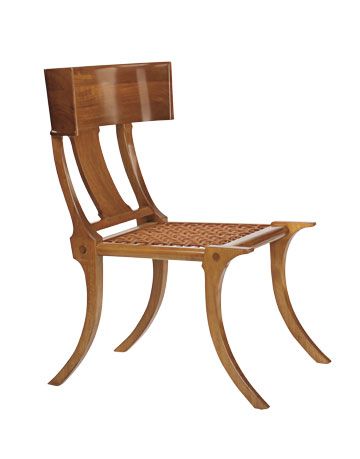The first chair was able to identify in the historical record was not a physical chair but a sculpture of one from the Cycladic islands, dated to around 5000 years ago The figurine depicts a musician playing a harp while sitting in what looks like a typical kitchen chair, with a straight back and four legs. By the time of the ancient Egyptians, sitting was a matter of status: Everyone sat on stools or on the ground, but chairs with backs or armrests were reserved for the elite.
Around 2500 years ago the Greeks invented the Klismos which featured curved legs and a curved backrest, by many considered as one of the most beautiful chairs of all time.
In ancient Greek art, almost everybody was sitting in a klismos chair. We have women, men, gods, and clearly important people, musicians sitting in them.
Today’s iconic chairs include the made-for-TV-watching recliner, the ergonomic task chair and especially the monobloc plastic chair. The latter can be mass-produced and sold cheaply, and has therefore spread rapidly around the world, becoming the most widely used chair on the planet. The chairs also subtly testify to local innovation. Plastic chairs are rarely imported; instead, manufacturers in developing countries typically buy used plastic-molding equipment from developed countries and make chairs that “have local motifs worked into them. It may be the color of the chair. Often the backs are decorated in ways you might not find if you just go down to your local store. This keeps the agelong tradition of chairs alive. Chairs often reflect on the culture and the Zeitgeist of a certain culture, so next time you sit sit down somewhere think twice about the meaning of the chair.
source: www.Brittanica.com

